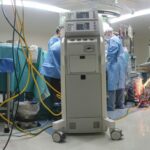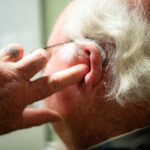The Future of Wearable Fertility Trackers: Personalized, Data-Driven Reproductive Health


Photo by Nappy on Unsplash
Introduction: The New Era of Fertility Tracking
The landscape of fertility tracking is undergoing a transformation. No longer limited to paper calendars or basic apps, today’s wearable fertility trackers harness advanced sensors, artificial intelligence (AI), and personalized analytics to empower individuals and couples on their reproductive journeys. These innovations are making fertility monitoring more accurate, user-friendly, and actionable, while raising important questions about data privacy, accessibility, and clinical reliability [1] .
How Wearable Fertility Trackers Work
The latest generation of fertility wearables leverages multiple technologies to paint a comprehensive picture of reproductive health. Devices such as smart rings, watches, and skin patches now monitor:
- Basal body temperature (BBT), which shifts with hormonal changes
- Heart rate variability (HRV), a marker influenced by estrogen and progesterone
- Sleep cycles, which can impact hormone regulation
- Activity levels and respiratory rate, both of which fluctuate during menstrual phases
- Skin conductance or electrodermal activity, providing additional physiological insights
Some devices incorporate direct hormone measurements via urine sensors, while others use sophisticated algorithms to infer hormone levels based on the above metrics [2] . The integration of these data streams allows for more precise ovulation prediction and cycle phase identification, crucial for both conception planning and general reproductive health management.
AI and Predictive Analytics: Smarter, More Personalized Insights
Artificial intelligence is rapidly advancing the capabilities of wearable fertility trackers. By analyzing large datasets of user biometrics and historical cycles, AI can identify subtle patterns and predict fertility windows more accurately than manual methods. For example, platforms like Hera Fertility employ AI to offer tailored recommendations and improvement plans for users, adapting over time as more data is collected [1] .
Recent product launches, such as the Ultrahuman Ring AIR with the “Cycle and Ovulation Pro” plug-in, exemplify this trend. The system uses a temperature-sensing algorithm based on 15 years of clinical research, trained on over 260,000 menstrual cycles, to provide adaptive, personalized fertility insights. This approach enables users with irregular cycles, polycystic ovary syndrome (PCOS), or other reproductive health challenges to receive more accurate and supportive tracking [4] .
Clinical Validation and Real-World Impact
The credibility of wearable fertility trackers is increasingly supported by clinical research. A 2024 systematic review in the Journal of Medical Internet Research found that wearables reliably monitor physiological indicators-such as skin temperature and HRV-under real-world conditions, offering clinically relevant insights for ovulation and menstrual cycle tracking. These findings confirm that wearables can supplement or, in some cases, replace traditional cycle monitoring in assisted reproductive technology (ART) settings [3] .
For example, the OvuSense technology-now powering the Ultrahuman Ring AIR-is not only based on 15 years of research but also has FDA clearance for specific applications, lending further trust in its accuracy and safety [5] . However, not all applications of these algorithms are FDA-cleared, so users should always review device labeling and intended use.
Data Privacy and Security: Protecting Sensitive Health Information
As wearable fertility trackers collect increasingly detailed and sensitive health data, robust data privacy and security measures become essential. Companies like Hera Fertility and Thryve are prioritizing transparent privacy policies, secure data storage, and user control over information sharing [1] . Users are encouraged to:
- Review device privacy policies before purchase
- Enable multi-factor authentication and data encryption where available
- Regularly update device firmware to ensure security patches are applied
- Consult healthcare providers to understand how wearable data integrates with clinical care
For those concerned about digital privacy, consider using wearables whose manufacturers have a strong track record in health data security and compliance with regulations such as HIPAA or GDPR. Always maintain awareness of where and how your reproductive data is stored and shared.

Photo by Volodymyr Hryshchenko on Unsplash
How to Access and Make the Most of Wearable Fertility Trackers
If you are interested in adopting a wearable fertility tracker, consider the following step-by-step approach:
- Identify Your Needs: Are you tracking for conception, general health, or monitoring a specific condition? Your goals will influence which features matter most-such as direct hormone sensing, AI-driven insights, or integration with other health data.
- Research Available Devices: Visit official websites of established manufacturers like Oura, Ultrahuman, and Ava to review product specifications, clinical evidence, and user reviews. Look for FDA-clearance or equivalent certification for added assurance of accuracy, especially if you have a medical condition.
- Consult Healthcare Professionals: Before relying solely on wearable trackers for fertility decisions, discuss your plans with an OB/GYN or reproductive endocrinologist. They can help interpret data and recommend complementary diagnostic approaches.
- Set Up and Calibrate: Once you’ve selected a device, follow the manufacturer’s setup instructions carefully. Wear the tracker consistently, and input any required baseline information (such as cycle history) to calibrate predictions.
- Monitor and Adjust: Use the device’s app or dashboard to view cycle predictions, symptom logs, and trend analysis. Adjust tracking habits based on lifestyle changes, travel, or medication use, which can all impact cycle patterns.
It’s possible to find wearables at a range of price points. Some platforms offer free basic apps with optional premium features, while others require a one-time hardware purchase or monthly subscription. As pricing and availability can change, visit the official manufacturer’s site or consult major retailers for current options.
If you have difficulty accessing advanced fertility wearables, consider discussing alternatives with your healthcare provider, such as traditional BBT thermometers, menstrual tracking apps, or clinical hormone testing. Many clinics can provide guidance on both digital and analog options for fertility monitoring.
Challenges and Future Directions
Despite the promise of wearable fertility trackers, several challenges remain:
- Accuracy: While AI and sensor technology are improving, devices may still produce false positives or negatives, particularly for users with irregular cycles or underlying health conditions.
- Accessibility: Advanced trackers may not be affordable or available to all users. Developers and policymakers are working to expand access, but out-of-pocket costs can still be a barrier.
- Integration with Healthcare: Not all providers are equipped to interpret wearable data, and interoperability with electronic medical records is still evolving.
- Ethical Considerations: The rise of personalized reproductive data raises questions about consent, data ownership, and potential misuse. Ongoing vigilance is needed to protect user rights.
Looking ahead, the future of wearable fertility trackers will likely see:
- Greater integration with telehealth and remote care
- Expansion of features to support a wider range of users, including those with chronic reproductive health conditions
- Continued advances in AI to provide even more personalized, actionable insights
- Enhanced privacy and security controls, driven by user demand and regulatory evolution
Alternative Approaches and Additional Resources
If wearable fertility trackers are not accessible or suitable for your needs, you can opt for:
- Manual tracking: Use printed or digital menstrual calendars and BBT thermometers.
- Clinic-based monitoring: Seek cycle and ovulation monitoring at fertility clinics, which may use ultrasound, bloodwork, and professional hormone assays.
- Community resources: Many local health departments or reproductive health organizations offer educational materials, classes, or support groups for fertility tracking and reproductive wellness.
To find more information about wearable fertility trackers or reproductive health support, consider searching terms such as “wearable fertility technology,” “AI ovulation prediction,” and “femtech reproductive health”. Official manufacturer sites and reputable medical journals are excellent sources for the latest research and product updates.
Key Takeaways
The future of wearable fertility trackers is defined by personalization , data-driven insights , and an ongoing commitment to user privacy and accessibility . As technology evolves, these devices will play an increasingly central role in reproductive health, offering support for conception, cycle management, and broader wellness goals. By staying informed and proactive, users can harness these tools to take greater control of their fertility journey.
References
- [1] Hera Fertility (2024). AI & Fertility Tracking: Modern Guide to Reproductive Health.
- [2] Reproductive Times (2024). Wired for Wellness: Is Wearable Tech the Future in Fertility?
- [3] Thryve (2024). Fertility Tracking with Wearables: Empowering the Femtech Revolution.
- [4] TechCrunch (2025). Ultrahuman acquires viO HealthTech to launch enhanced cycle and ovulation tracking.
- [5] Ultrahuman Blog (2025). Introducing Cycle & Ovulation Pro: Best-in-class ovulation tracking for all cycles.






